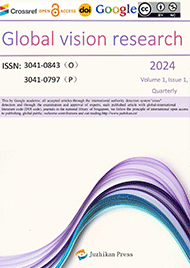 65 84368249
65 84368249 info@juzhikan.asia
info@juzhikan.asia 65 84368249
65 84368249 info@juzhikan.asia
info@juzhikan.asia
Dongguan Tangxia Second Experimental Primary School Bao'an District, Shenzhen City, Guangdong Province 518100
Abstract:Increasing attention is being paid to primary school students' extracurricular reading due to its benefits for academic performance, reading and writing ability, and future development. However, students' interest in extracurricular reading is declining, prompting research. This article aims to identify specific issues and provide improvement recommendations. A survey of 892 students from grades 1-3 in a Shenzhen primary school revealed problems such as lack of interest, poor reading habits, limited reading volume, and inadequate reading environments at home and school. To address these issues, suggestions include creating better reading environments, selecting books that students enjoy, conducting reading activities, and providing proper guidance and cultivating good reading habits by teachers.
keyword:writing;reading ability
References
[1].Abdulmughni, S. A. S. (2015). Teaching skills through literature. , 5(2), 10-16.
[2].Akubuilo, Francis|Okorie, Eugene U.|Onwuka, Gloria|Uloh-Bethels, Annah Chinyeaka. (2015). Reading readinessdeficiency in children: causes and ways of improvement. Journal of Education & Practice, 6.
[3].Allan Wigfield, John T. Guthrie, Stephen Tonks, & Kathleen C. Perencevich. (2004). Children's motivation for reading: domain specificity and instructional influences. Journal of Educational Research, 97(6), 299-309.
[4].Allan Wigfield, John T. Guthrie, Stephen Tonks, & Kathleen C. Perencevich. (2004). Children's motivation for reading: domain specificity and instructional influences. Journal of Educational Research, 97(6), 299-309.
[5].Akubuilo, Francis|Okorie, Eugene U.|Onwuka, Gloria|Uloh-Bethels, Annah Chinyeaka. (2015). Reading readiness deficiency in children: causes and ways of improvement. Journal of Education & Practice, 6.
[6].Dai, W. (2013). Correlates of the reading interest of chinese high school students in international schools. Asian Social Science, 9(3), 164-176.
[7].Edmunds, K. M., & Bauserman, K. L. (2006). What teachers can learn about reading motivation through conversations with children. Reading Teacher, 59(5), 414-424.
[8].Gambrell, L. B. (2011). Seven rules of engagement: what's most important to know about motivation to read. Reading Teacher, 65(3), 172–178.
[9].Gottfried, A. E., Marcoulides, G. A., Gottfried, A. W., & Oliver, P. H. (2009). A latent curve model of parental motivational practices and developmental decline in math and science academic intrinsic motivation. Journal of Educational Psychology, 101(3), 729-739.